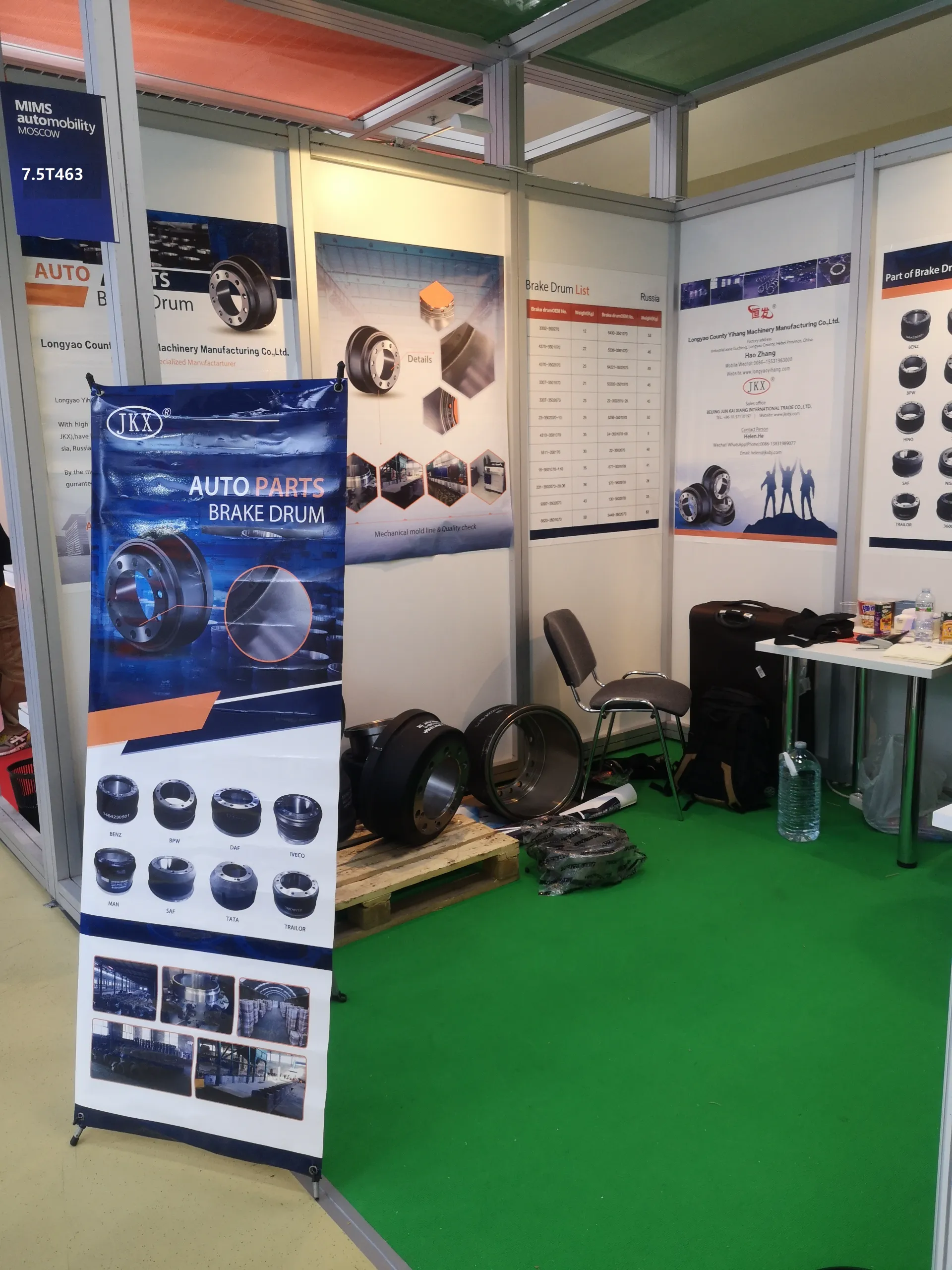Nov . 13, 2024 17:42 Back to list
brake drum assembly diagram
Understanding Brake Drum Assembly A Comprehensive Overview
The brake system of a vehicle is one of its most critical components, ensuring the safety and control necessary for driving. Among the various forms of brake systems, the drum brake assembly is a time-tested design that remains prevalent in many vehicles today. In this article, we will explore the brake drum assembly, its components, functionality, and maintenance considerations.
What is a Brake Drum Assembly?
A brake drum assembly is part of the drum brake system, which utilizes friction to slow down or stop the wheels of a vehicle. This system is composed of several key components the brake drum, brake shoes, wheel cylinder, return springs, and mounting hardware. Together, these parts work seamlessly to provide effective braking performance.
Key Components of Brake Drum Assembly
1. Brake Drum The outer housing that rotates with the wheel. It is typically made of cast iron or aluminum and provides the surface against which the brake shoes press to create friction.
2. Brake Shoes C-shaped metal components that contain friction material on the inner side. When hydraulic pressure is applied to the wheel cylinder, the brake shoes expand and press against the inner surface of the brake drum.
3. Wheel Cylinder A hydraulic component that converts hydraulic pressure from the brake lines into mechanical force to push the brake shoes outward against the drum.
4. Return Springs Springs that retract the brake shoes when the brake pedal is released, ensuring that the shoes do not drag against the drum and cause unnecessary wear.
5. Mounting Hardware Various brackets, clips, and adjusters that securely hold the assembly together and facilitate the adjustment of the brake shoes' position.
How Does the Brake Drum Assembly Work?
When the driver presses the brake pedal, hydraulic fluid from the master cylinder flows into the wheel cylinder, causing it to expand. This expansion pushes the brake shoes outward against the inner surface of the brake drum. The friction between the brake shoes and the drum generates the necessary force to slow or stop the vehicle.
As the vehicle decelerates, the energy dissipates as heat due to friction. To prevent overheating, the brake drum is designed with vents or fins that aid in cooling during operation. Once the driver releases the brake pedal, the return springs retract the brake shoes away from the drum, allowing the wheels to spin freely again.
brake drum assembly diagram

Advantages of Brake Drum Assemblies
Brake drum systems have several advantages, making them a common choice in many vehicles
1. Cost-Effectiveness Drum brakes are typically less expensive to manufacture and replace compared to disc brakes.
2. Uniform Wear The design promotes even wear across the brake shoe surface, prolonging the lifespan of the components.
3. Self-Adjusting Mechanisms Many drum brake systems come with self-adjusting mechanisms that maintain optimal shoe-to-drum clearance over time, improving performance.
Maintenance and Troubleshooting
Regular maintenance is essential for the brake drum assembly to function effectively and safely. Key maintenance practices include
- Inspection Periodic checking of the brake drums, shoes, and hardware for signs of wear or damage.
- Cleaning Keeping the brake components free from dust, debris, and moisture to prevent degradation in performance.
- Adjustment Ensuring that the brake shoes maintain proper contact with the drum, utilizing the adjustment mechanisms as needed.
- Replacement Knowing when to replace worn-out brake shoes or drums is vital to avoid brake failure.
In conclusion, the brake drum assembly plays a crucial role in vehicle safety and performance. Understanding its components and operation can help drivers appreciate the importance of regular maintenance and prompt attention to any braking issues. By caring for these essential parts, drivers can ensure their vehicles operate safely and efficiently on the road.
-
Scania Brake Drums: OEM Quality for Optimal Safety & Durability
NewsAug.16,2025
-
R.V.I: Advanced Remote Visual Inspection for Precision
NewsAug.15,2025
-
Discover HYUNDA: Innovative Vehicles, Equipment & Solutions
NewsAug.14,2025
-
R.V.I: Unlock Advanced Insights & Real-time Performance
NewsAug.13,2025
-
Kamaz Brake Drum: Durable & Reliable for Heavy Duty Trucks
NewsAug.12,2025
-
Heavy Duty Iveco Brake Drum - Premium Quality & Safety
NewsAug.11,2025
